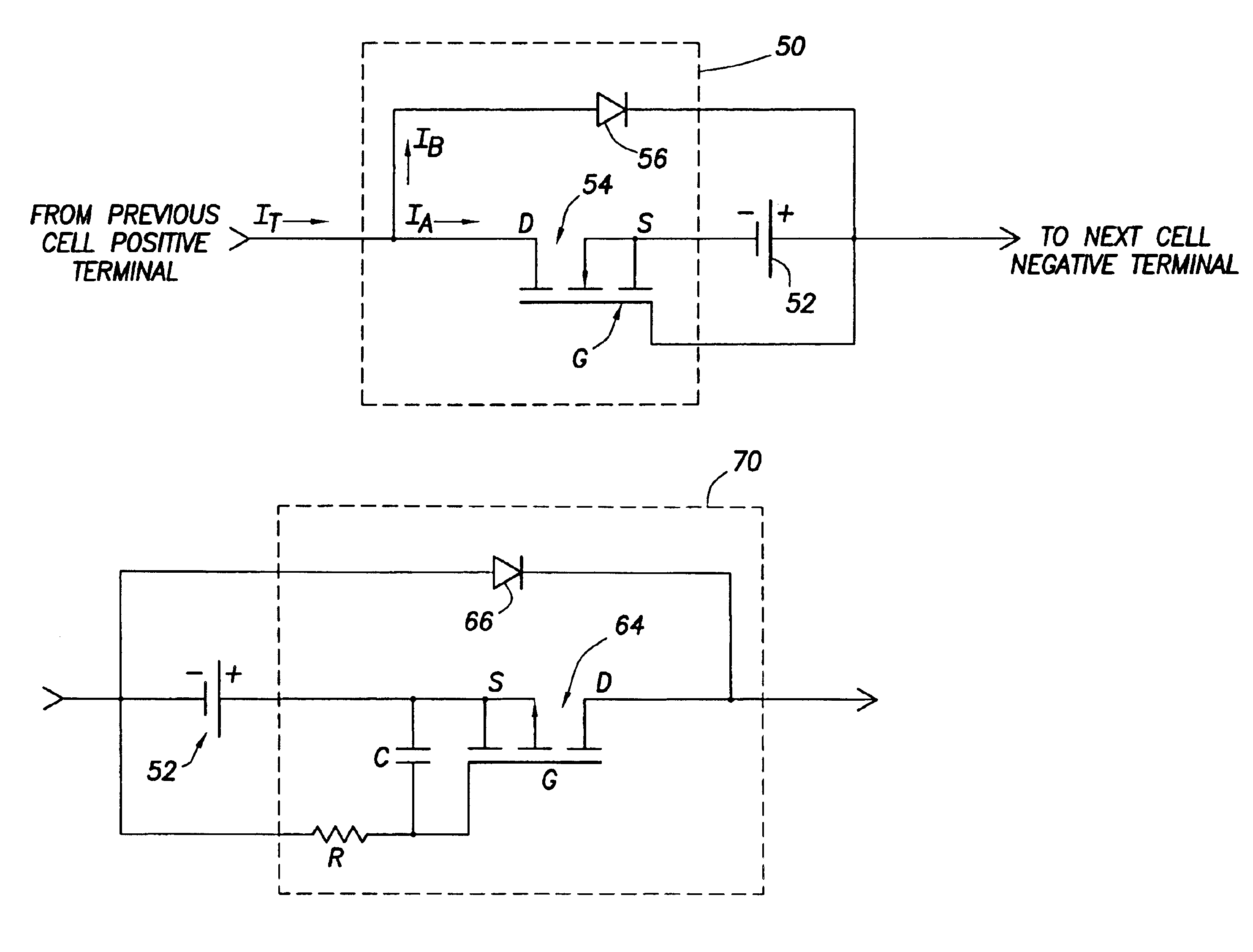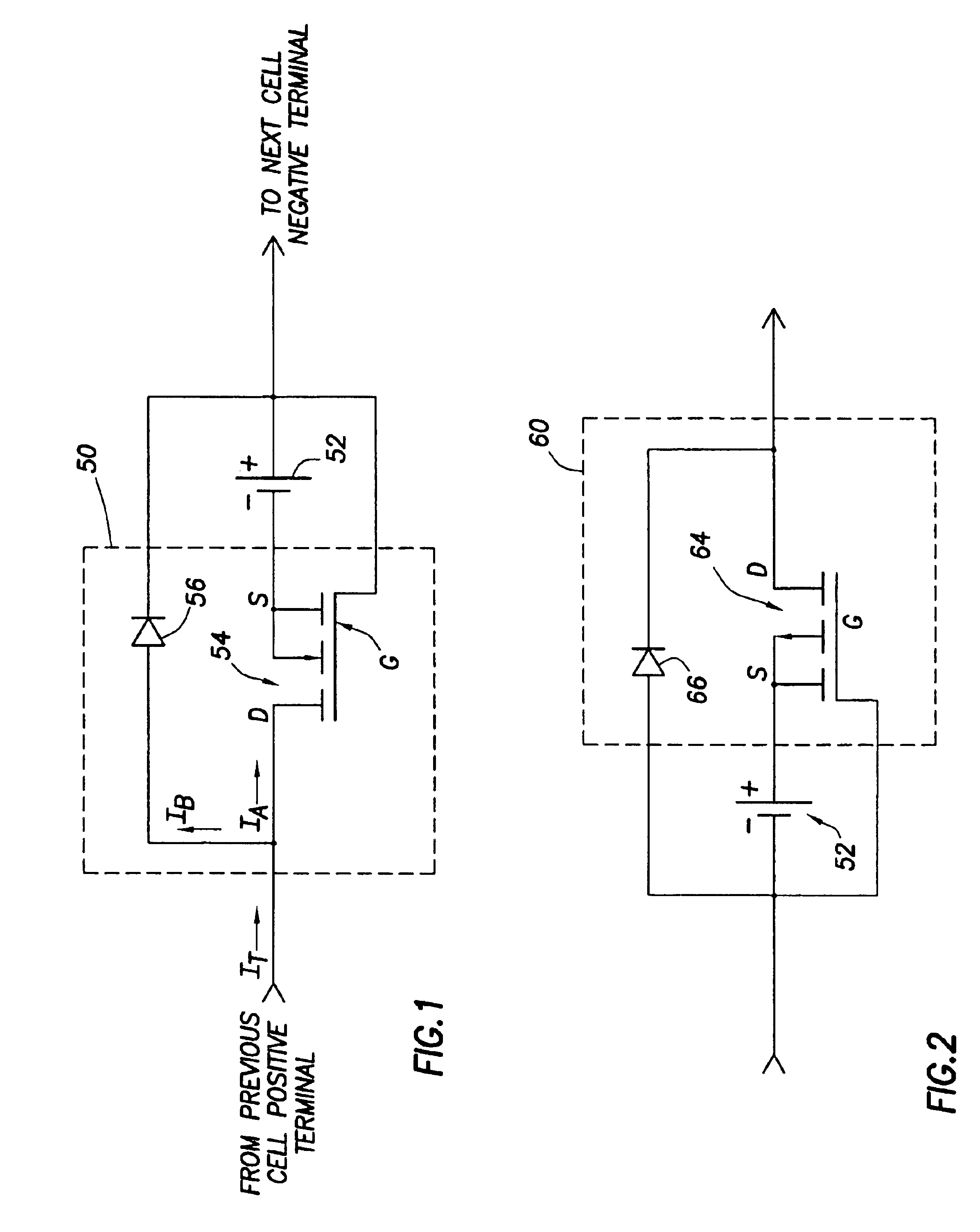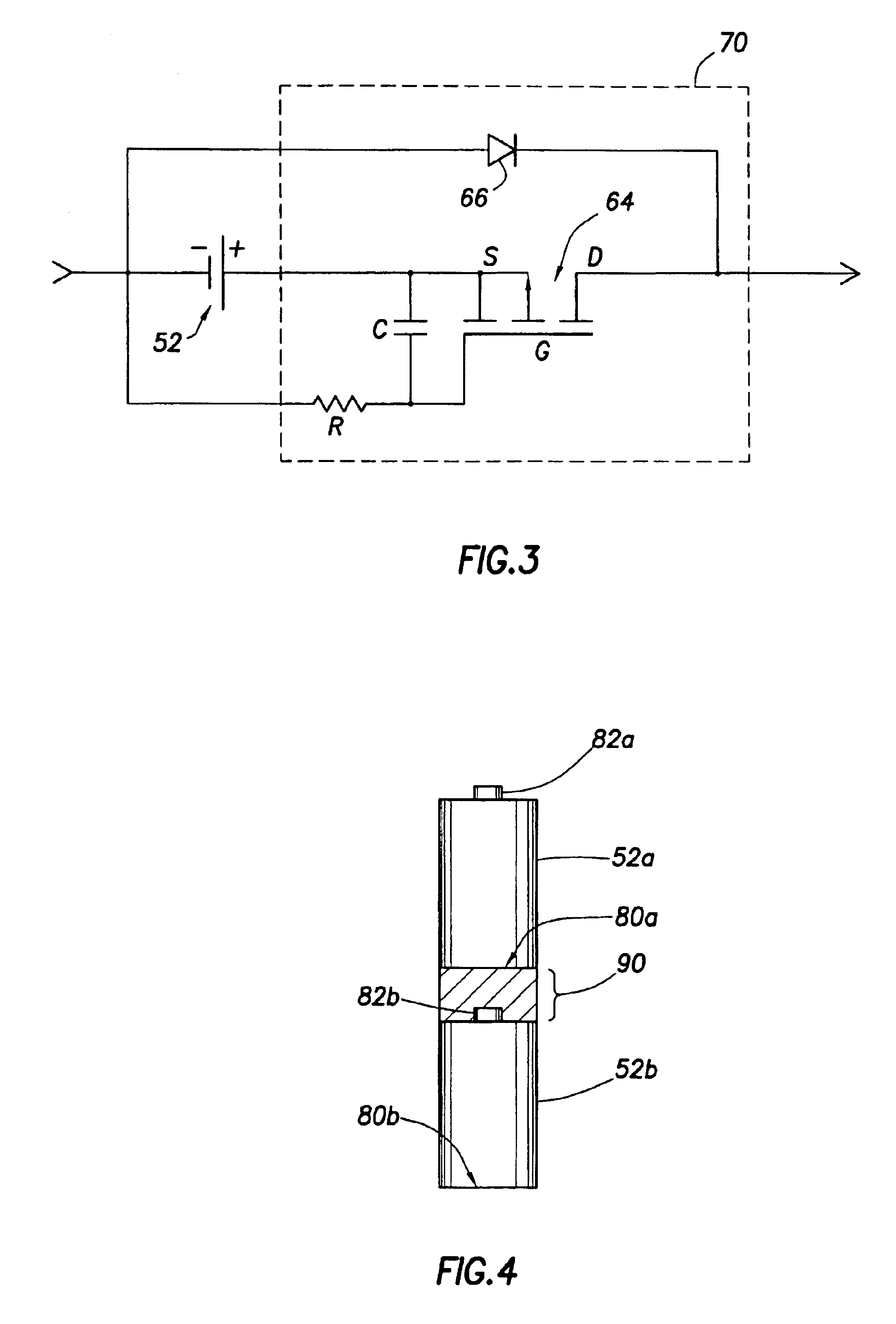Protection circuit for a battery cell
a protection circuit and battery cell technology, applied in the direction of safety/protection circuits, secondary cells servicing/maintenance, transportation and packaging, etc., can solve the problems of optimal li/socl.sub.2 cell performance, potential hazard for the tool and its battery, and increase the performance of the cell, so as to improve the protection
- Summary
- Abstract
- Description
- Claims
- Application Information
AI Technical Summary
Benefits of technology
Problems solved by technology
Method used
Image
Examples
Embodiment Construction
The problems noted above are solved in large part by a protection circuit which couples to and protects a cell. The protection circuit generally limits the current that can flow through the cell when the voltage across the cell falls to a predetermined minimum threshold. By limiting the current through the cell in this situation, the voltage on the cell will not fall below the minimum safe level.
In accordance with one embodiment of the invention, the protection circuit includes a transistor coupled in series with the cell and a bypass device coupled to both the transistor and the cell and in parallel with the transistor and cell. The transistor preferably comprises a metal oxide semiconductor field effect transistor ("MOSFET") and more preferably either an n-channel, enhancement mode MOSFET or a p-channel, enhancement mode MOSFET. The bypass device preferably comprises a diode that permits current to conduct around the cell being protected when the transistor limits the current thro...
PUM
| Property | Measurement | Unit |
|---|---|---|
| diameter | aaaaa | aaaaa |
| temperatures | aaaaa | aaaaa |
| temperatures | aaaaa | aaaaa |
Abstract
Description
Claims
Application Information
 Login to View More
Login to View More - R&D
- Intellectual Property
- Life Sciences
- Materials
- Tech Scout
- Unparalleled Data Quality
- Higher Quality Content
- 60% Fewer Hallucinations
Browse by: Latest US Patents, China's latest patents, Technical Efficacy Thesaurus, Application Domain, Technology Topic, Popular Technical Reports.
© 2025 PatSnap. All rights reserved.Legal|Privacy policy|Modern Slavery Act Transparency Statement|Sitemap|About US| Contact US: help@patsnap.com



